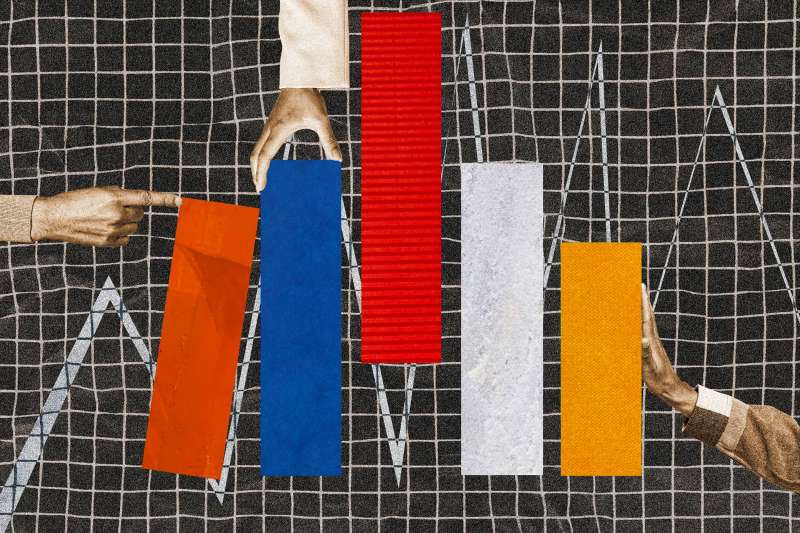Savings Account APYs Are Likely to Drop Soon. What's Your Next Move?

The era of high interest rates has made it a great time to save money — but the heyday of easy 5% APYs may soon be coming to an end.
The Federal Reserve's war on inflation appears to winding down as the central bank holds rates steady and prepares to start cutting them later this year. When the Fed changes these benchmark interest rates, APYs on consumer deposit accounts like certificates of deposit (CDs), high-yield savings accounts and money market accounts are expected to quickly follow suit.
“Within a relatively short period of time — usually a week to 10 days [after the Fed] — you’ll start seeing banks adjusting their rates,” says Lawrence Sprung, founder and wealth advisor at Mitlin Financial.
As the Fed repeatedly hiked rates over the past two years, many of the best high-yield savings accounts did in lock step. One bright spot in a period marked by soaring inflation and interest rates was the wave of emails some folks received, alerting them their bank account savings rate was going up again and again.
Pretty soon, the opposite will likely happen, says Sprung. “You’re gonna end up getting an email or notification that as a result of the Fed move, your interest rate has been lowered.”
What to expect for high-yield savings rates in 2024
Interest rates on savings accounts are largely expected to drop this year. For many financial experts, they’re not questioning if rates will fall — but when and by how much.
Right now, you can still find high-yield savings accounts with APYs as high as 4% and 5%, but they may soon start to retreat.
The Federal Reserve has signaled it may cut interest rates three or more times in 2024, and some analysts are expecting as many as six cuts. Fed officials meet eight times a year to decide whether to cut rates, raise them or hold them steady. The next meeting is January 31.
According to the CME FedWatch Tool, investors largely expect the Fed to hold rates steady in January — with most predicting a 0.25 percentage point rate cut as soon as March (the Fed’s second meeting).
Not everyone agrees rates will fall that soon, though. Randy Watsek, a financial advisor at Raymond James, says he believes that “Wall Street jumped the gun” with its predictions and the Fed will hold rates steady a little longer than that. Sprung also thinks March is probably too early for the Fed to start cutting rates.
Translation: You will likely have at least a couple of months before savings rates begin to fall across the board.
By year's end, benchmark interest rates are expected to be somewhere in the ballpark of 3.5% to 4.5%, according to FedWatch. If those predictions are accurate, APYs on high-yield savings accounts will likely top out slightly below that range.
CDs and I bonds as alternatives to savings accounts
While it seems apparent that the Fed plans to cut benchmark rates this year, it’s impossible to know exactly what’s going to happen, or when. With savings accounts, your interest rate is variable, meaning the bank can change it at any time. There's no "locking in" your rate like with other options like CDs or I bonds.
Because of the restrictions involved in CDs, Watsek warns against putting all your money into a long-term CD just to snag a 3% or 4% APY because you think rates will fall soon. However, short-term rates — like current rates for high-yield savings accounts and CDs with terms of a year or less — remain attractive, he says.
Additionally, the money that experts recommend keeping in your savings account — i.e. your emergency fund — should be fairly liquid so that you have quick access to it in times of need.
That limits the number of places where you can safely sock away your rainy-day fund. Still, here’s a quick run-through of comparable options.
- CDs: Short-term CDs from around three months to a year are boasting fairly high rates, often 5% APY or higher. If you ladder the CD terms (depositing a portion of your savings into various term lengths), you can lock in a respectable APY while maintaining some liquidity, Sprung says.
- Money market accounts: The rates on money market accounts right now largely mirror the rates on savings accounts — with the best APYs around 4% to 5%. Like savings accounts, you can’t lock in the rates as banks can change them day-to-day. These accounts tend to come with more flexible ATM card and check-writing privileges, but keep in mind that minimum balance requirements and maintenance fees tend to run higher than regular savings accounts.
- I bonds: Series-I savings bonds are government bonds bought directly from the U.S. Department of the Treasury. They’re designed to shield your savings from rising prices and have interest rates that change based on the latest inflation trends. However, they have withdrawal restrictions similar to CDs; you won’t be able to cash them out within one year of purchase. Right now, the I bonds rate is 5.27%.
More from Money:
The Best Time to Buy a CD in 2024 Could Be Right Now

